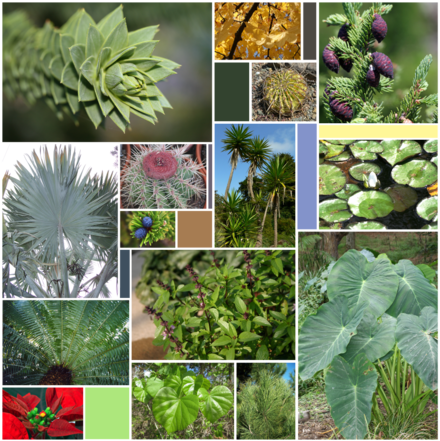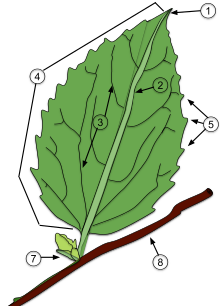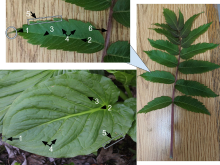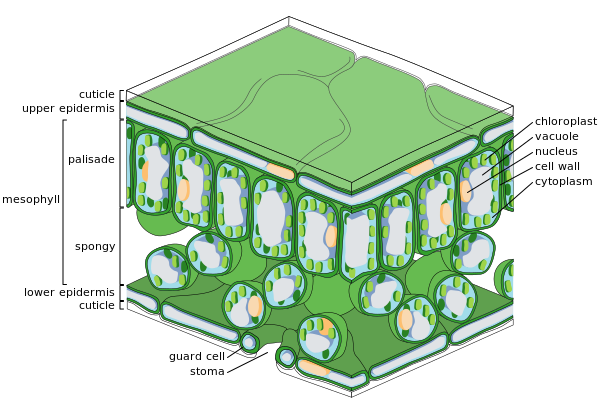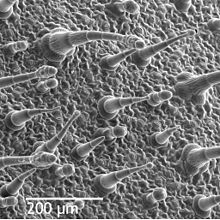The endurance running hypothesis is the hypothesis that the evolution of certain human characteristics can be explained as adaptations to long-distance running. The hypothesis suggests that endurance running played an important role for early hominins in obtaining food. Researchers have proposed that endurance running began as an adaptation for scavenging and later for persistence hunting.
Anatomical and physiological adaptations
Running vs. walking
Much research has been geared towards the mechanics of how bipedal walking has evolved in the genus Homo.
However, little research has been conducted to examine how the specific
adaptations for running emerged, and how they influenced human
evolution.
The bit of research that has focused on human running provides
much evidence for bodily function and structures that improve running
only, and are not used in walking. This suggests that running was an
adaptation, not that it came about as a byproduct of walking.
Running and walking incorporated different biomechanisms. Walking
requires an "inverted pendulum" where the body's center of mass is
shifted over the extended leg, to exchange potential and kinetic energy
with each step.
Running involves a "mass spring" mechanism to exchange potential and
kinetic energy, with the use of tendons and ligaments. Tendons and
ligaments are elastic tissues that store energy. They are stretched and
then release energy as they recoil. This mass spring mechanism becomes
less energetically costly at faster speeds and is therefore more
efficient than the inverted pendulum of walking mechanics when traveling
at greater speeds. Tendons and ligaments, however, do not provide these benefits in walking.
Although the mass spring mechanism can be more energetically
favorable at higher speeds, it also results in an increase in ground
reaction forces
and is less stable because there is more movement and pitching of the
limbs and core of the body. Ground forces and body pitching movement is
less of an issue in the walking gait, where the position of the body's
center of mass varies less, making walking an inherently more stable
gait. In response to the destabilization of the running gait, the human
body appears to have evolved adaptations to increase stabilization, as
well as for the mass-spring mechanism in general. These adaptations,
described below, are all evidence for selection for endurance running.
Skeletal evidence
Many researchers compare the skeletal structures of early hominins such as Australopithecus to those of Homo in order to identify structural differences that may be significant to endurance running.
Nuchal ligament: Because the head is decoupled from the shoulders, early Homo
needed a way to stabilize the head. The nuchal ligament is an important
evolved feature in head stabilization. It starts at the midline of the occiput and connects to the upper trapezius.
This ligament is also important in terms of archaeological findings,
because it leaves a small indentation and ridge in the skull, allowing
researchers to see if various species had a nuchal ligament. The ability
to see traces of ligaments in archaeological findings is rare because
they degrade quickly and often leave no trace. In the case of the nuchal
ligament, a trace of its existence is left with the presence of the
skull ridge. Because neither Australopithecus nor Pan had the skull ridge, it has been concluded that this feature is unique to Homo.
Because the nuchal ligament is only activated while running, the amount
of running can be inferred from the rugosity of the muscle insertions.
In the case of Homo Erectus
and Neanderthals, very strong nuchal ligament markings are present, but
are less marked in modern humans, indicating a decrease in running
behavior.
Nuchal ligament of Homo sapiens
Shoulder and head stabilization: The human skeleton is different from early hominins as there is less of a connection between the pectoral girdle
parts of the shoulders and upper back and head, which would be
advantageous for climbing but would hinder the movements of the upper
body needed to counter leg movement and therefore stabilize the body and
head when running. This stabilization is unnecessary in walking.
Limb length and mass: Homo has longer legs relative
to body mass, which helps to decrease the energetic costs of running,
as time in contact with the ground increases.
There is also a decrease in mass of distal parts of limbs of humans,
which is known to decrease metabolic costs in endurance running, but has
little effect on walking. Additionally, the mass of the upper body limbs in Homo
has decreased considerably, relative to total body mass, which is
important to reduce the effort of stabilizing the arms in running.
Joint surface: Humans have evolved to absorb great shock
and force on the skeletal structure while running. The impact force on
the body can reach up to 3–4 times body weight in endurance running,
putting the skeletal structure under great stress. To reduce this stress
humans have increased joint surfaces relative to body mass to spread
force over larger surface areas, particularly in the lower body.
This adaptation, which allows humans to absorb great shock and force
applied to the skeleton, is not seen in australopithecine skeletal
structures.
Plantar arch: The plantar arch in the human foot has an elastic spring function that generates energy for running but not walking.
Fossils of the australopithecine foot show only partial arch,
suggesting less of a spring capacity. For the plantar arch spring
mechanism to function fully, there must also be restricted rotation in
the hind and front parts of the foot. This restriction comes from
projected toe bone and compacted mid-foot joint structures in humans,
which does not become present until Homo habilis.
Calcaneal tuber and Achilles tendon: Studies have explored the calcaneal tuber, the posterior half of the calcaneus bone, as a correlate for Achilles tendon
length and have found correlation between calcaneal tuber length and
Achilles tendon length. Because shorter calcaneal tuber length leads to
greater Achilles stretch, more kinetic energy is converted to elastic
energy, translating into better overall running economy.
Comparisons between Neanderthals and modern humans reveal that this
adaptation was absent in Neanderthals, leading researchers to conclude
that endurance running capabilities may have been enhanced in
anatomically modern humans.
Shorter toes: Human toes are straight and extremely short in
relation to body size compared to other animals. In running, the toes
support 50 to 75% of body mass in humans. Impulse
and mechanical work increase in humans as toe length increases, showing
that it is energetically favorable to have shorter toes. The costs of
shorter toes are decreased gripping capabilities and power output.
However, the efficiency benefits seem to outweigh these costs, as the
toes of A. afarensis remains were shorter than great apes, but
40% longer than modern humans, meaning that there is a trend toward
shorter toes as the primate species moves away from tree-dwelling. This
40% increase in toe length would theoretically induce a flexor impulse
2.5 times that of modern humans, which would require twice as much
mechanical work to stabilize.
Stabilization
Semicircular canal: The semicircular canal,
a series of three interconnected tubes within each ear, is important
for sensing angular rotations of the head and thus plays a crucial role
in maintaining balance and sensing and coordinating movement.
Comparative studies have shown that animals with larger semicircular
canals are able to sense a greater range of head movements and therefore
have greater speed and agility. Evolutionarily, greatly reduced
semicircular canal diameters are evident in Neanderthals but expanded in
modern humans, suggesting that this adaptation was selected for in
response to increased endurance running.
Vestibulo-ocular reflexes (VORs): VORs
are enabled by muscles in the eye, which sense angular accelerations of
the head and adjust eye movements to stabilize these images. This was
an important adaptation for running because it allowed Homo to see more clearly during the rough pitching motion that occurs during running.
Gluteals: The gluteus maximus in Homo erectus is significantly larger than that of Australopithecus. It is suited to stabilize the trunk while running, but gluteals of that size and strength are not necessary for walking.
Iliac spine: Homo has expanded areas on the sacrum
and posterior iliac spine for greater muscle attachment. These areas are
used to stabilize the trunk and reduce the body's forward pitch caused
by running strides.
Increased efficiency
Thermoregulation
In addition to advances in skeletal structure and stabilization,
adaptations that led to increased efficiency in dissipation of heat were
instrumental in the evolution of endurance running in Homo.
The duration for which an animal can run is determined by its capacity
to release more heat than is produced to avoid lethal temperatures.
The majority of mammals, including humans, rely on evaporative
cooling to maintain body temperature. Most medium-to-large mammals rely
on panting, while humans rely on sweating,
to dissipate heat. Advantages to panting include cooler skin surface,
little salt loss, and heat loss by forced convection instead of reliance
on wind or other means of convection. On the other hand, sweating is
advantageous in that evaporation occurs over a much larger surface area
(the skin), and it is independent of respiration, thus is a much more
flexible mode of cooling during intense activity such as running.
Because human sweat glands are under a higher level of neuronal control
than those of other species, they allow for the excretion of more sweat
per unit surface area than any other species. Heat dissipation of later
hominins was also enhanced by the reduction in body hair. By ridding themselves of an insulating fur coat, running humans are better able to dissipate the heat generated by exercise.
In addition to improved thermoregulation, hominins have evolved
an enhanced method of respiration consistent with the demands of
running. Due to their orientation, respiration in quadrupedal mammals is
affected by skeletal and muscular stresses generated through the motion
of running. The bones and muscles of the chest cavity are not only
responsible for shock absorption, but are also subjected to continuous
compression and expansion during the running cycle. Because of this
movement, quadrupeds are restricted to one breath per locomotor cycle,
and thus must coordinate their running gait and respiration rate.
This tight coordination then translates into another restriction: a
specific running speed that is most energetically favorable. The upright
orientation of bipedal hominins, however, frees them from this
respiration-gait restriction. Because their chest cavities are not
directly compressed or involved in the motion of running, hominins are
able to vary their breathing patterns with gait.
This flexibility in respiration rate and running gait contributes to
hominins having a broader range of energetically favorable running
speeds.
Storage and utilization of energy
During periods of prolonged exercise, animals are dependent on a combination of two sources of fuel: glycogen
stored in the muscles and liver, and fat. Because glycogen is more
easily oxidized than fat, it is depleted first. However, over longer
periods of time, energy demands require that fat stores be utilized as
fuel. This is true for all mammals, but hominins, and later modern
humans, have an advantage of being able to alter their diet to meet
these prolonged energy demands.
In addition to flexibility in the utilization of energy, hominins have evolved larger thyroid and adrenal
glands which enable them to utilize the energy in carbohydrates and
fatty acids more readily and efficiently. These organs are responsible
for releasing hormones including epinephrine, norepinephrine,
adrenocorticotropic hormone (ACTH), glucagon, and thyroxine. Larger
glands allows for greater production of these key hormones and
ultimately, maximized utilization of stored fuel.
Taken together, the flexibility in diet and the enhanced usage of
fuel heightens the previously mentioned finding that, unlike
quadrupeds, hominins do not have a single energetically optimal running
speed. For quadrupeds, increasing running speed means increasing the
demand for oxygen and fuel. Due to skeletal structure and bipedalism,
hominins are free to run energetically over a broader range of speeds
and gaits, while maintaining a constant energy consumption rate of
approximately 4.1 MJ per 15 km. Thus their utilization of energy is
greatly enhanced.
Endurance running and scavenging
All
of the aforementioned adaptations enabled Homo to scavenge for food
more effectively. Endurance running could have been used as a means of
gaining access to distant carcasses or food stores faster than other
scavengers and/or carnivores. Scavenging may have taken one or both of
two forms: opportunistic scavenging and strategic scavenging.
Early Homo almost certainly scavenged opportunistically.
Scavenging is considered opportunistic when one "come[s] across
carcasses in the course of [their] daily foraging activities".
Strategic scavenging involves a planned search for carcasses.
This style of scavenging would have benefitted from endurance running
much more than opportunistic scavenging. Strategic scavenging would have
involved the use of long range cues, such as birds circling overhead.
Endurance running would have been advantageous in this setting because
it allowed hominins to reach the carcass more quickly. Selection
pressures would have been very high for strategic scavenging, because
hominins were diurnal, while their major competitors (hyenas, lions,
etc.) were not. Thus, they would have had to make sure to capitalize on
daytime carcasses. Selection pressure also came from the weakness of
Homo. Because they were very weak, they were unlikely to drive off any
large competition at the carcass. This fact led to an even higher need
for a way to reach the carcass before these competitors.
Endurance running and persistence hunting
Persistence hunting is "a form of pursuit hunting in which [the hunter uses] endurance running during the midday heat to drive [prey] into hyperthermia and exhaustion so they can easily be killed".
Many question persistence hunting's plausibility when bow and arrow and
other technologies were so much more efficient. However, in the Early
Stone Age (ESA), spears were only sharpened wood, and hominins had not
begun using tools. The lack of spearheads or bows meant they could only
hunt from very close range—between 6 and 10 meters.
Hominins thus must have developed a way to stab prey from close range
without causing serious bodily harm to themselves. Persistence hunting
makes killing an animal easier by first bringing it to exhaustion, so
that it can no longer retaliate violently.
Persistence hunters work by hunting in the middle of the day,
when it is hottest. Hunters choose a single target prey and chase it at a
speed between its trot and gallop, which is extremely inefficient for
the animal. The hunter then continues pursuing over a period of hours,
during which he may lose sight of the animal. In this case, the hunter
must use tracks and an understanding of the animal to continue the
chase. The prey eventually overheats and becomes unable to continue
fleeing. Homo, which does not overheat as quickly because of its
superior thermoregulation capabilities, is then able to stab the prey
while it is incapacitated and cannot attack.
Tracking and running
Due
to the complexity of following a fleeing animal, tracking methods must
have been a prerequisite for the use of endurance running in persistence
hunting. Scientists posit that early tracking methods were developed in
open, sparsely vegetated terrain such as the Kalahari Desert
in southern Africa. This "systemic tracking" involves simply following
the footprints of animals and was most likely used for tracking
grassland species on soft terrain. Skeletal remains suggest that during
the Middle Stone Age, hominins used systemic tracking to scavenge for
medium-sized animals in vegetation cover, but for hunting antelope in
more open grasslands. From the Middle Stone Age into the Later Stone
Age, tracking methods developed into what is termed "speculative
tracking". When tracks could not easily be found and followed, Homo predicted where tracks were most likely to be found and interpreted other signs to locate prey.
This advanced method of tracking allowed for the exploitation of prey
in a variety of terrains, making endurance running for persistence
hunting more plausible.
The process of tracking can last many hours and even days in the
case of very large mammals. Often times, the hunter(s) will have to run
after the animal to keep up. The skeletal parameters of the tibia of
early modern humans and Neanderthals have been compared with runners,
and it surprisingly shows that these individuals were running even more
than cross-country runners today. Particularly, European Neanderthals, the Skhul and Qafzeh hominins, and Late Stone Age Khoisan
score very high compared to runners. This is consistent with modern
observations of Khoisan, who routinely spend hours running after animals
that have been shot with arrows.
Examples of persistence hunters
Although
exact dates and methods of persistence hunting are difficult to study,
several recent accounts of persistence hunting have been recorded.
Tribes in the Kalahari Desert in Botswana have been known to employ
endurance running to scavenge and hunt prey. In the open country, the
!Xo and /Gwi tribes run down slow-moving animals such as aardvark and
porcupines, while during the hotter part of the day, they target animals
such as eland, kudu, gemsbok, hartebeest, duiker, steenbok, cheetah, caracal, and African wildcats. In addition to these existing African tribes, it has been suggested that the Tarahumara people in Mexico and the Paiute people and Navajo in the American Southwest, used persistence hunting to capture prey including deer and pronghorn. The Aborigines in Australia are known to have hunted kangaroo in similar ways.
Due to the increased availability of weapons, nutrition, tracking
devices, and motor vehicles, one may argue that persistence hunting is
no longer an effective method of hunting animals for food. However,
there are examples of the practice occurring in modern times: the !Xo
and /Gwi in the central Kalahari, still practice persistence hunting and
have developed advanced methods of doing so. Similarly, the Russian Lykov family that lived in isolation for 40 years also used persistence hunting due to a lack of weapons.
Seasonal differences
In
particular, these two tribes maximize the efficiency of persistence
hunting by targeting specific species during different seasons. In the
rainy season, prime targets include steenbok, duiker, and gemsbok, as
wet sand opens their hooves and stiffens their joints. Hunting in the
early rainy season is particularly advantageous because dry leaves form
"rocks" in the animals' stomachs, resulting in diarrhea. Stiff joints
and suboptimal digestion make the prey weaker and more available
targets. In contrast, in the dry season, hunters run down kudu, eland,
and red hartebeest because these species tire more easily in the loose
sand. Hunters say that the best time to practice persistence hunting is
near the end of the dry season when animals are poorly nourished and
therefore more easily run to exhaustion.[7] By targeting the most vulnerable prey during each season, the hunters maximize the advantages of endurance running.
Conditions/parameters
- Persistence hunting must be performed during the day when it is hot, so that the animal will overheat.
- Homo must have been able to track the animal, as they would have lost sight of it during the chase.
- Such a long hunt requires high amounts of dietary sources of water, salt, and glycogen.
- Although the success rate of recorded persistence hunts is very high (approximately 50%), unsuccessful hunts are very costly. Therefore, there would have had to be a social system in which individuals share food, so unsuccessful hunters could borrow food from others when necessary.
In culture and folklore
In the oral traditions of the Hadza, an isolated aboriginal people of hunter-gatherers living in Tanzania, the Tlaatlanebe in their folk history's second epoch practiced this.
In the first epoch, the world was inhabited by large hairy humanoids called Akakaanebe ("ancestors"), who did not yet possess tools or fire. They simply "stared" at game until it fell dead, referring to either scavenging or early persistence hunting without weapons, or a combination of the two. They did not build houses but slept under trees.
The Tlaatlanebe of the second epoch, however, were large but
without hair and lived in caves. As animals had grown more wary of
humans due to earlier hunting, they now had to be chased and hunted with
dogs.
Criticisms
While
there is evidence supporting selection on human morphology to improve
endurance running ability, there is some dispute over whether the
ecological benefits of scavenging and persistence hunting foraging
behaviors were the driving force behind this development.
The majority of the arguments opposing persistence hunting and
scavenging behaviors are linked to the fact that the paleohabitat and paleoecology of early Homo were not conducive to these behaviors. It is thought that the earliest members of Homo lived in African savanna-woodlands.
This environment consisted of open grassland, as well as parts with
dense vegetation—an intermediate between forest and open savannas. The
presence of such tree covering would reduce visibility and so require
tracking skills. This causes problems for the hypothesis of persistence
hunting and running to aid scavenging.
Against persistence hunting
Ungulates are known from archaeological evidence to have been the main prey of the early Homo,
and given their great speed, they would have easily been able to outrun
early hominins. Ungulate speed, coupled with the variable visibility of
the savanna-woodland, meant that hunting by endurance running required
the ability to track prey. Pickering and Bunn argue that tracking is
part of a sophisticated cognitive skill set that early hominins would
not have had, and that even if they were following a trail of blood left
by an injured ungulate—which may have been in their cognitive
capacity—the ability to craft penetrating projectile technology was
absent in early hominins.
It has been suggested that modern hunters in Africa do not use
persistence hunting as a foraging method, and most often give up a chase
where the trail they were following ends in vegetation.
The rare groups of hunters who do occasionally participate in
persistence hunting are able to do so because of the extremely hot and
open environments. In these groups, a full day of rest and recovery is
required after a hunt, indicating the great toll persistence hunts take
on the body, making them rare undertakings.
Finally, in critique of Liebenberg's research on modern day
persistence hunting, it was revealed that the majority of the hunts
initiated were prompted for filming rather than spontaneous, and that
few of these hunts were successful. The hunts that were successful
involved external factors such as the hunters being able to stop and
refill water bottles.
A response to these criticisms has been formulated by Lieberman et al.,
noting that it is unclear how humans could have grown to occupy a new
niche as a diurnal social carnivore without persistence hunting, as the
weapons preferred in modern hunter-gatherer tribes would not have been
available at the time.
Against scavenging
The
proposed benefit of endurance running in scavenging is the ability of
early hominins to outcompete other scavengers in reaching food sources.
However paleoanthropological studies suggest that the savanna-woodland
habitat caused a very low competition environment. Due to low
visibility, carcasses were not easily located by mammalian carnivores,
resulting in less competition.





